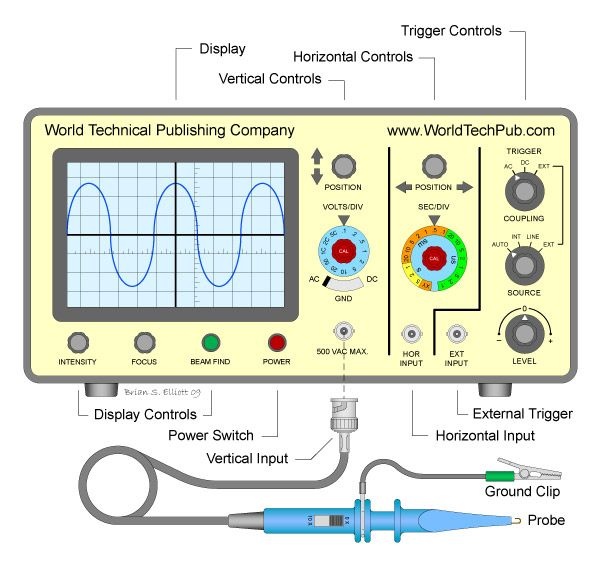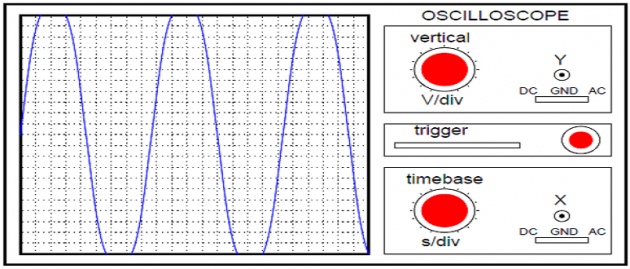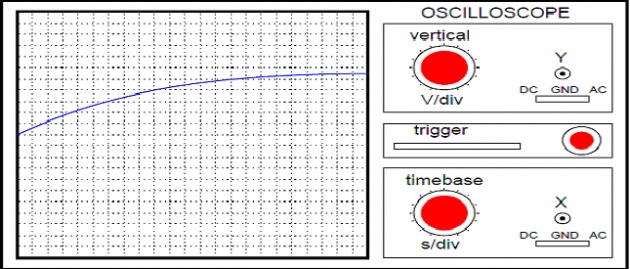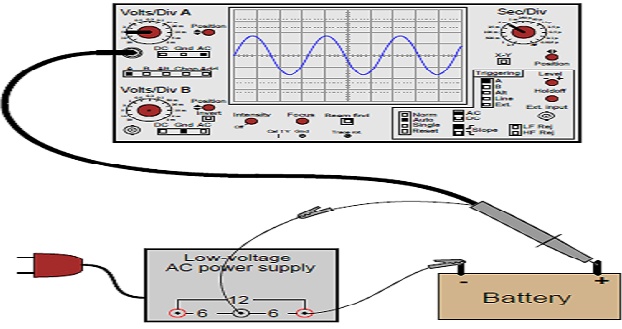1. Always for calibration of osciloscope, attach the probe to the “calibration switch” first and check whetheryou are getting 2Vp-p voltage. If not getting the signal, use the controls like “position”,“horizontal sensitivity” and “vertical sensitivity” to get the signal. Still if you are not gettingthe signal on the oscilloscope your probe is faulty, exchange it.
2. Volt/Div red variation knob should be moved clock wise until you hear click sound.
(It causes attenuation in the signal)
3. Variation sweep should also be moved in clock wise direction until its end while using the
oscilloscope.(It elongates the signal).
Following figure shows basic oscilloscope:

4. Most of the student always do mistake while handling the certain channel on the
oscilloscope. Remember if you have attached the probe with the channel 1 , you will use
volt/div knob of channel 1 and vice versa for channel 2.

5.While using the oscilloscope , if your signal amplitude is very big you can control it by
volt/div knob(vertical sensitivity) of that certain channel.

6. If the signal is moving is very slow or very fast your can adjust the signal by “trigger section”
or “Hold knob” .Move both the knobs until you get a steady signal.

7. If the signal length is very broad that you cannot visualize the signal, adjust it with the Time/DivKnob (Horizontal Sensitivity)
8. If an oscilloscope is connected to a series combination of AC and DC sources, content displayedon the screen of oscilloscope depends on where the control ”coupling” is set.

With the coupling control set to ”DC”, the waveform displayed will be elevated above (or depressed below) the ”zero” line:Setting the coupling control to ”AC”, however, results in the waveform automatically centering itselfon the screen, about the zero line.



